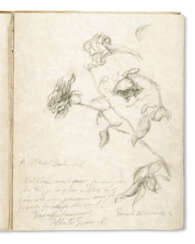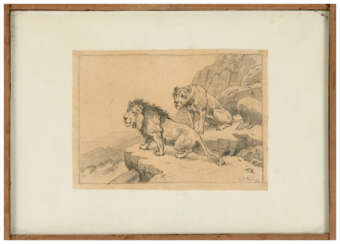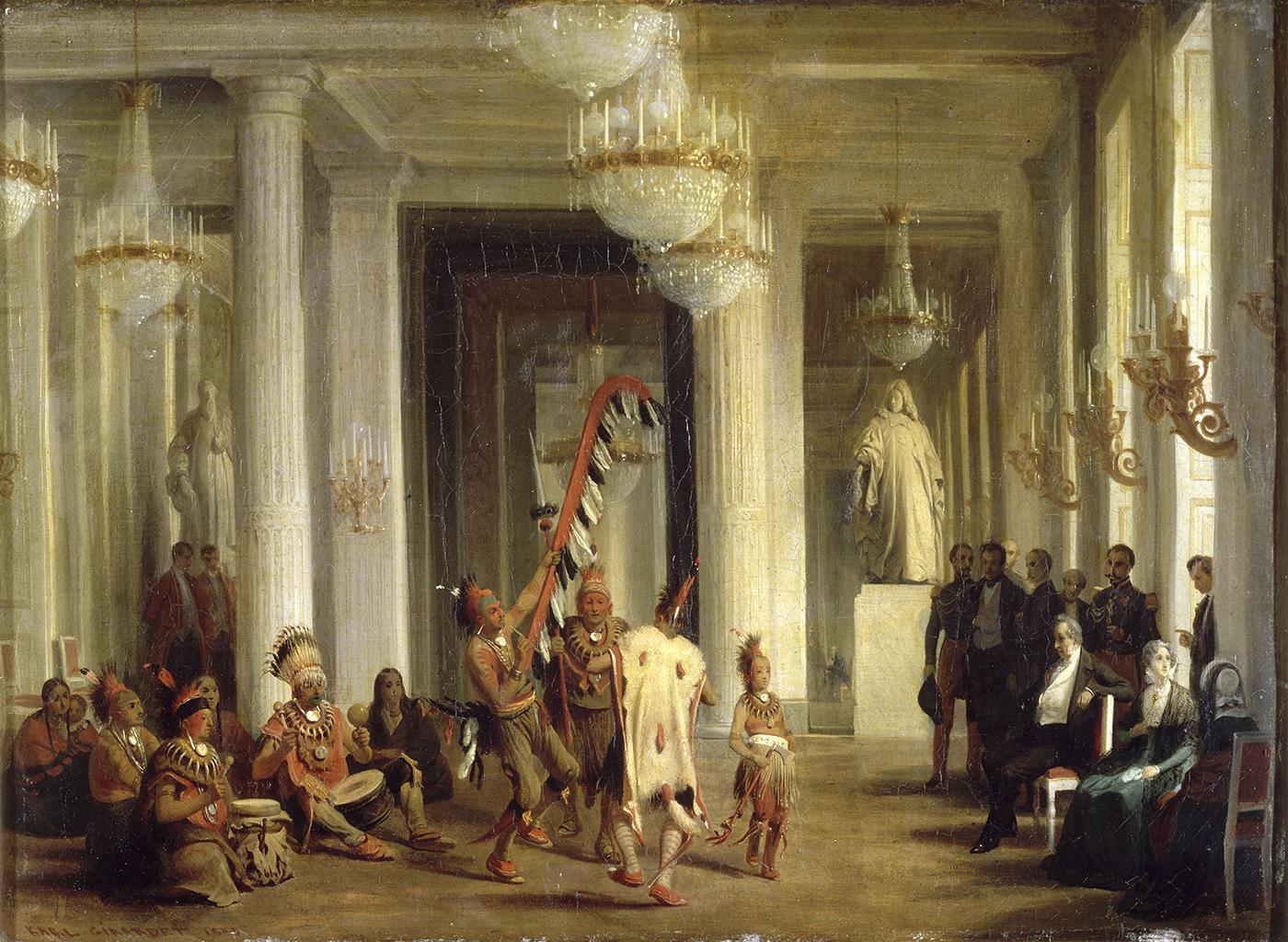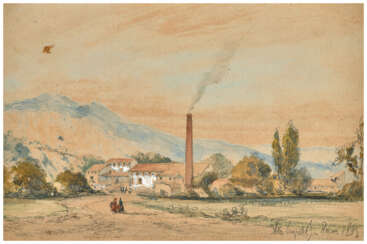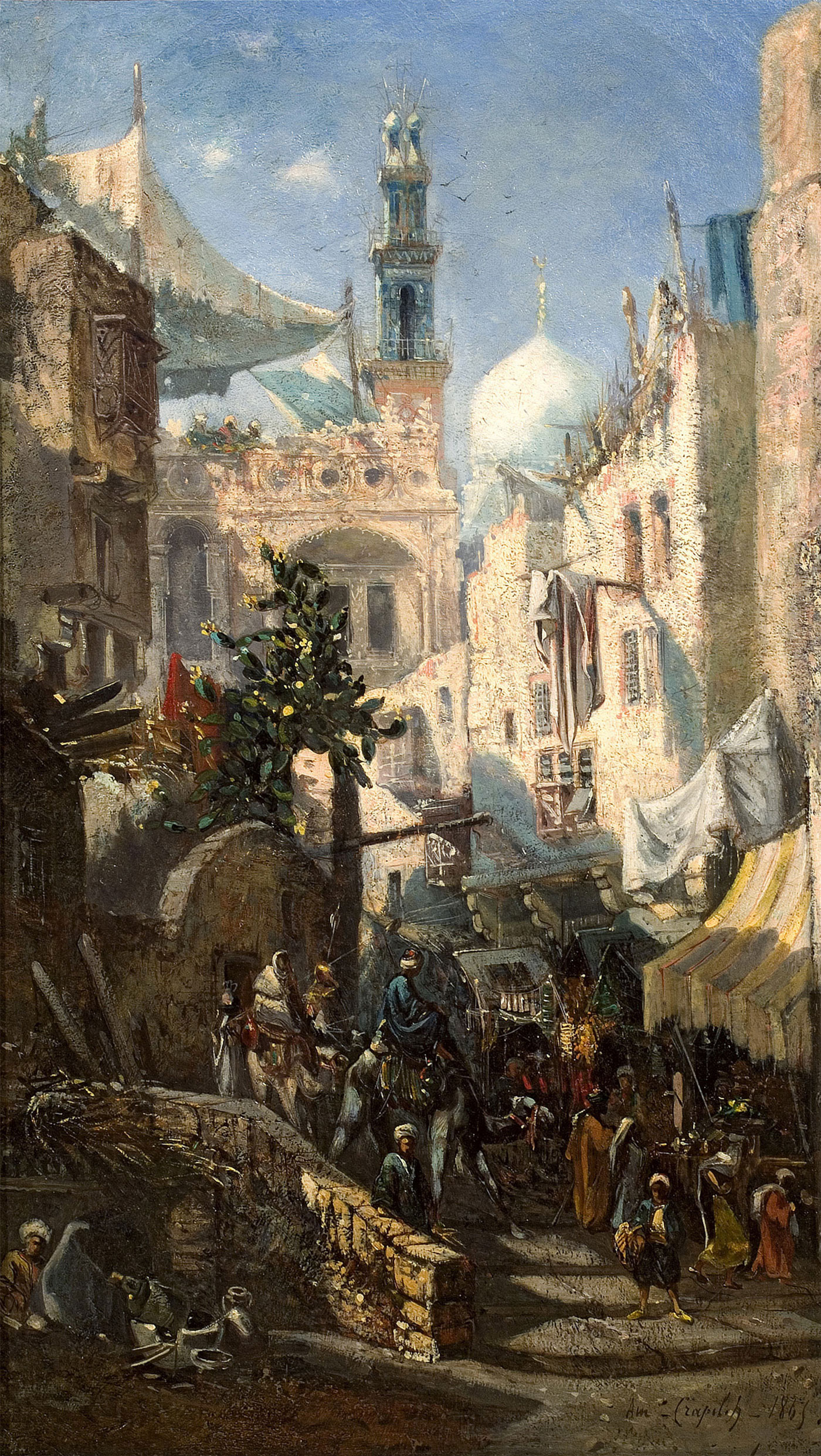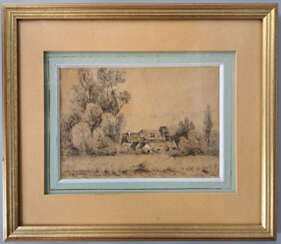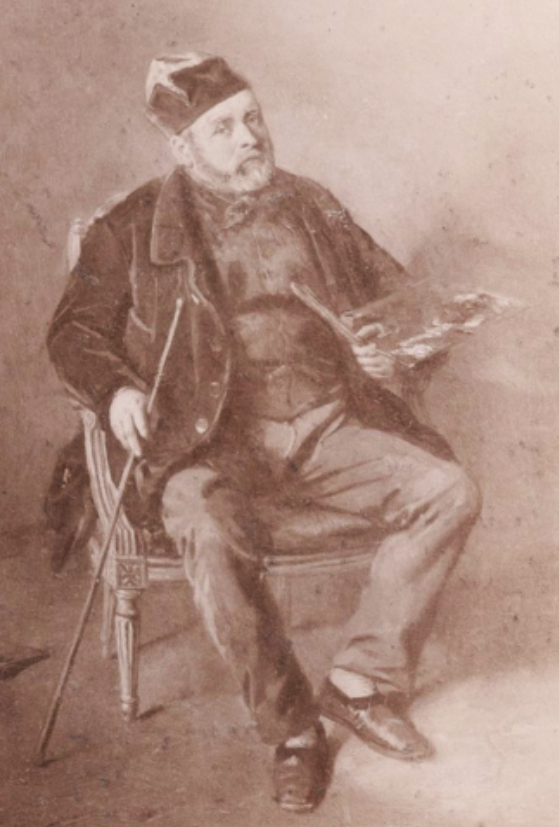dessin au crayon

Georges-Frédéric Rötig was a French animal painter and illustrator best known for his depictions of wildlife.


Jacques-Louis David, a preeminent French artist of the Neoclassical movement, made a profound impact on the art world with his compelling history paintings and portraiture. Born in Paris in 1748 into a prosperous family, David's early life was marked by tragedy and ambition. Despite losing his father at a young age and facing opposition from his family, his determination to pursue art led him to become a student of Joseph-Marie Vien and later, a notable figure in the French Academy in Rome. David's artistic journey was characterized by a rigorous classical education, culminating in winning the prestigious Prix de Rome in 1774, which allowed him to study the masterpieces of classical antiquity and the Renaissance in Italy.
David's work is renowned for its classical austerity, a response to the frivolous Rococo style that preceded him. His paintings, such as "The Oath of the Horatii," reflect a blend of classical themes with a modern sense of emotion and drama, resonating with the revolutionary spirit of his times. As the French Revolution unfolded, David aligned himself with its ideals, becoming an active supporter and using his art to serve political purposes. He was closely associated with leaders of the Revolution, including Maximilien Robespierre, and later became the official painter of Napoleon, contributing significantly to the iconography of the era.
Throughout his career, David had a significant influence on French art, not only through his own works but also as a teacher. His studio was a nurturing ground for the next generation of French painters, despite his reputation for being demanding. David's move to Brussels after the fall of Napoleon marked the final phase of his career, where he continued to paint until his death in 1825.
David's legacy extends beyond his contributions to Neoclassical art. He played a crucial role in the development of modern art history, blending classical ideals with contemporary themes, and influencing not only his contemporaries but also future generations of artists. His works, housed in museums around the world, continue to be studied and admired for their technical mastery and emotional depth.
For art collectors and experts, David's oeuvre offers a fascinating insight into a transformative period in art history, where the classical and the contemporary intersected to create a new visual language. His paintings not only depict historical and mythological scenes but also embody the ideals, struggles, and aspirations of his time.
For those interested in exploring the works of Jacques-Louis David and the impact of his art on the Neoclassical movement, updates on new product sales and auction events related to David's work can provide valuable opportunities to engage with his legacy. Signing up for updates ensures access to the latest information and events, offering a deeper understanding of this pivotal artist's contributions to art and culture.


Jacques-Louis David, a preeminent French artist of the Neoclassical movement, made a profound impact on the art world with his compelling history paintings and portraiture. Born in Paris in 1748 into a prosperous family, David's early life was marked by tragedy and ambition. Despite losing his father at a young age and facing opposition from his family, his determination to pursue art led him to become a student of Joseph-Marie Vien and later, a notable figure in the French Academy in Rome. David's artistic journey was characterized by a rigorous classical education, culminating in winning the prestigious Prix de Rome in 1774, which allowed him to study the masterpieces of classical antiquity and the Renaissance in Italy.
David's work is renowned for its classical austerity, a response to the frivolous Rococo style that preceded him. His paintings, such as "The Oath of the Horatii," reflect a blend of classical themes with a modern sense of emotion and drama, resonating with the revolutionary spirit of his times. As the French Revolution unfolded, David aligned himself with its ideals, becoming an active supporter and using his art to serve political purposes. He was closely associated with leaders of the Revolution, including Maximilien Robespierre, and later became the official painter of Napoleon, contributing significantly to the iconography of the era.
Throughout his career, David had a significant influence on French art, not only through his own works but also as a teacher. His studio was a nurturing ground for the next generation of French painters, despite his reputation for being demanding. David's move to Brussels after the fall of Napoleon marked the final phase of his career, where he continued to paint until his death in 1825.
David's legacy extends beyond his contributions to Neoclassical art. He played a crucial role in the development of modern art history, blending classical ideals with contemporary themes, and influencing not only his contemporaries but also future generations of artists. His works, housed in museums around the world, continue to be studied and admired for their technical mastery and emotional depth.
For art collectors and experts, David's oeuvre offers a fascinating insight into a transformative period in art history, where the classical and the contemporary intersected to create a new visual language. His paintings not only depict historical and mythological scenes but also embody the ideals, struggles, and aspirations of his time.
For those interested in exploring the works of Jacques-Louis David and the impact of his art on the Neoclassical movement, updates on new product sales and auction events related to David's work can provide valuable opportunities to engage with his legacy. Signing up for updates ensures access to the latest information and events, offering a deeper understanding of this pivotal artist's contributions to art and culture.


Théophile Alexandre Steinlen was a French painter, graphic artist, etcher, and illustrator of Swiss origin who worked in the Realist and Art Nouveau styles.


Henri de Toulouse-Lautrec was a distinguished French Post-Impressionist artist, renowned for his deep insights into Parisian nightlife and the world of entertainment in the 1890s. Born into an aristocratic family in Albi, France, Toulouse-Lautrec faced significant health challenges. He suffered from a rare condition, possibly pycnodysostosis, which stunted the growth of his legs following two fractures during his adolescence, leading to a notably short stature as an adult.
Despite his physical limitations, Toulouse-Lautrec immersed himself in art, becoming a key figure in the Post-Impressionist movement alongside artists like Paul Cézanne and Vincent van Gogh. He is particularly celebrated for his vibrant and expressive depictions of the bohemian lifestyle in late 19th-century Paris, often featuring scenes from brothels and nightlife venues. His unique style combined elements of Art Nouveau and lithography, as evidenced in famous works such as "Moulin Rouge: La Goulue" and "At the Moulin Rouge: The Dance".
Toulouse-Lautrec's work offers a window into the Parisian entertainment scene of his time, marked by a vivid use of color and a candid portrayal of his subjects. His ability to capture the essence of Parisian society, from dancers to prostitutes, in an era of great artistic and cultural dynamism, makes his work particularly valuable to art collectors and experts.
For those interested in the art and life of Henri de Toulouse-Lautrec, staying informed about sales and auction events is essential. Sign up for updates to receive the latest news on pieces by Toulouse-Lautrec available for purchase or auction. This subscription focuses exclusively on new product sales and auction events related to Toulouse-Lautrec, ensuring that enthusiasts and collectors don't miss out on any opportunity to acquire pieces from this iconic artist.


Théodore Rousseau was a prominent French painter, celebrated for his pioneering contributions to the Barbizon school of landscape art. His dedication to capturing nature's essence made him a pivotal figure in landscape painting's evolution. Rousseau's technique involved painting directly from nature, a method that infused his works with a profound sense of realism and vitality. This approach was notably evident in his masterpiece "An Avenue of Trees, Forest of l'Isle-Adam," where he meticulously captured a scene entirely outdoors, a testament to his commitment to authenticity and detail.
Théodore Rousseau's artistry wasn't confined to painting alone; his drawings, like the detailed "Study of an Oak Tree," demonstrate his versatility and deep connection with nature. His works received significant recognition, culminating in a triumphant display at the Universal Exposition of 1855. However, his life was not devoid of challenges. Personal tragedies and professional setbacks marked his later years, yet his resolve and dedication to art remained unshaken.
For art enthusiasts and collectors, Théodore Rousseau's works are pivotal, not just for their beauty but also for their role in the history of landscape painting. His pieces like "The Great Oaks of Old Bas-Bréau" are cherished in collections worldwide, serving as enduring symbols of his talent and his profound influence on subsequent art movements.
For those interested in the intersection of nature and art, subscribing to updates on Théodore Rousseau can provide invaluable insights into his life's work, his contributions to the Barbizon school, and his lasting impact on the world of art. Stay informed about new discoveries, sales, and auction events related to Rousseau's oeuvre to deepen your appreciation and understanding of this illustrious artist's legacy.


Georges-Frédéric Rötig was a French animal painter and illustrator best known for his depictions of wildlife.


Théodore Rousseau was a prominent French painter, celebrated for his pioneering contributions to the Barbizon school of landscape art. His dedication to capturing nature's essence made him a pivotal figure in landscape painting's evolution. Rousseau's technique involved painting directly from nature, a method that infused his works with a profound sense of realism and vitality. This approach was notably evident in his masterpiece "An Avenue of Trees, Forest of l'Isle-Adam," where he meticulously captured a scene entirely outdoors, a testament to his commitment to authenticity and detail.
Théodore Rousseau's artistry wasn't confined to painting alone; his drawings, like the detailed "Study of an Oak Tree," demonstrate his versatility and deep connection with nature. His works received significant recognition, culminating in a triumphant display at the Universal Exposition of 1855. However, his life was not devoid of challenges. Personal tragedies and professional setbacks marked his later years, yet his resolve and dedication to art remained unshaken.
For art enthusiasts and collectors, Théodore Rousseau's works are pivotal, not just for their beauty but also for their role in the history of landscape painting. His pieces like "The Great Oaks of Old Bas-Bréau" are cherished in collections worldwide, serving as enduring symbols of his talent and his profound influence on subsequent art movements.
For those interested in the intersection of nature and art, subscribing to updates on Théodore Rousseau can provide invaluable insights into his life's work, his contributions to the Barbizon school, and his lasting impact on the world of art. Stay informed about new discoveries, sales, and auction events related to Rousseau's oeuvre to deepen your appreciation and understanding of this illustrious artist's legacy.

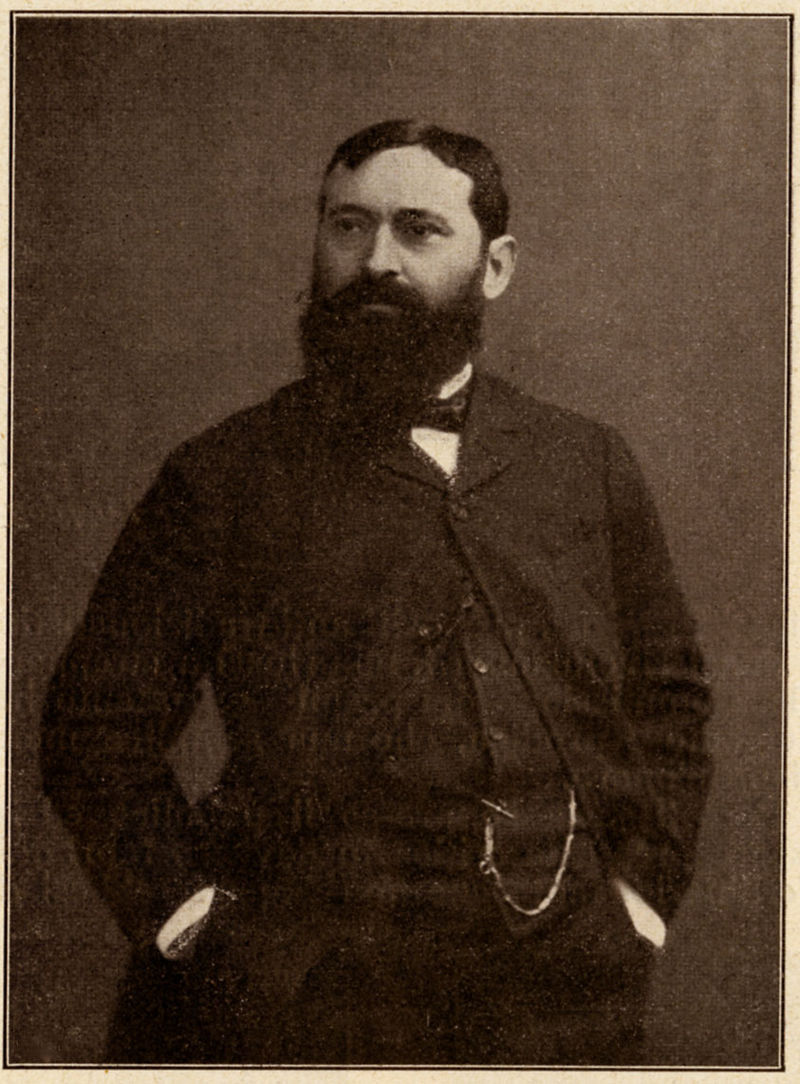
Giuseppe de Nittis was an Italian painter associated with the Macchiaioli movement, which emerged at the end of the 19th century as a reaction to the traditional academic style of painting.
Giuseppe de Nittis first studied at the Neapolitan Academy of Fine Arts before moving to Paris in 1868, where he was influenced by the Impressionist movement and the work of Édouard Manet and Edgar Degas. He quickly gained recognition for his ability to skilfully convey light and atmosphere in his paintings.
De Nittes' style can be described as a mixture of realism and impressionism. He often depicted city scenes, landscapes and portraits. His work is characterised by a loose brushwork, vivid colours and a strong sense of observation.


Georges-Frédéric Rötig was a French animal painter and illustrator best known for his depictions of wildlife.


Georges-Frédéric Rötig was a French animal painter and illustrator best known for his depictions of wildlife.


Georges-Frédéric Rötig was a French animal painter and illustrator best known for his depictions of wildlife.


Georges-Frédéric Rötig was a French animal painter and illustrator best known for his depictions of wildlife.

.jpg)
Alexandre Cabanel was a distinguished French painter, celebrated for his refined and idealized representations of classical and historical subjects. Born in Montpellier in 1823, he rose to prominence through his skillful integration of detail and romanticized aesthetics, typical of the academic art tradition of the 19th century.
Alexandre Cabanel's art was characterized by its exceptional polish and precision, qualities that earned him numerous accolades and the favor of important patrons, including Napoleon III. Perhaps his most renowned work, The Birth of Venus, epitomizes the lush idealism of his style. First showcased in the 1863 Salon, this painting captivated audiences and was promptly acquired by Napoleon III, underscoring Cabanel's central role in the artistic preferences of the Second Empire.
Throughout the 1860s, Alexandre Cabanel's influence expanded as he took on significant roles, such as a professorship at the École des Beaux-Arts, and his election to the Institut de France. His career was marked not only by his successful paintings but also by his active participation in the Paris Salons, where he often served as a jury member, advocating for traditional art standards against the emerging Impressionist movement.
Alexandre Cabanel was also a notable teacher, mentoring a generation of artists who would carry forward his academic principles. His workshop was a pivotal training ground for many who would become significant figures in their own right.
For collectors and art experts, Alexandre Cabanel's work remains a pinnacle of academic artistry, encapsulating the era's ideals of beauty and craftsmanship. To stay updated on exhibitions and auction events featuring Cabanel's works, consider signing up for specialized newsletters and alerts.

.jpg)
Alexandre Cabanel was a distinguished French painter, celebrated for his refined and idealized representations of classical and historical subjects. Born in Montpellier in 1823, he rose to prominence through his skillful integration of detail and romanticized aesthetics, typical of the academic art tradition of the 19th century.
Alexandre Cabanel's art was characterized by its exceptional polish and precision, qualities that earned him numerous accolades and the favor of important patrons, including Napoleon III. Perhaps his most renowned work, The Birth of Venus, epitomizes the lush idealism of his style. First showcased in the 1863 Salon, this painting captivated audiences and was promptly acquired by Napoleon III, underscoring Cabanel's central role in the artistic preferences of the Second Empire.
Throughout the 1860s, Alexandre Cabanel's influence expanded as he took on significant roles, such as a professorship at the École des Beaux-Arts, and his election to the Institut de France. His career was marked not only by his successful paintings but also by his active participation in the Paris Salons, where he often served as a jury member, advocating for traditional art standards against the emerging Impressionist movement.
Alexandre Cabanel was also a notable teacher, mentoring a generation of artists who would carry forward his academic principles. His workshop was a pivotal training ground for many who would become significant figures in their own right.
For collectors and art experts, Alexandre Cabanel's work remains a pinnacle of academic artistry, encapsulating the era's ideals of beauty and craftsmanship. To stay updated on exhibitions and auction events featuring Cabanel's works, consider signing up for specialized newsletters and alerts.















